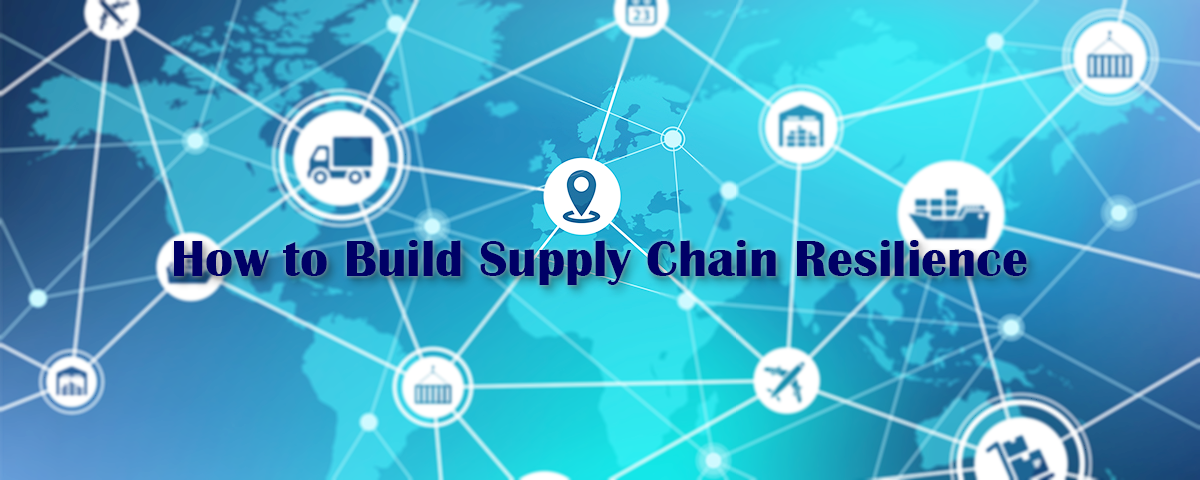
How to Build Supply Chain Resilience
Building a resilient supply chain is crucial for business success. It's impossible for anyone to predict the future, but we do know that unexpected, business-disrupting events could happen at any time. Luckily, we have the tools to prepare for those events - we just have to know how to use them.
A recent Gartner Survey found that only 21% of supply chain professionals would say that they already have a supply chain that is resilient. A resilient supply chain is one that displays good visibility, and the agility to shift sourcing, manufacturing, and distribution activities easily, if need be.
These qualities are very important to have in a supply chain if businesses want to be as prepared as possible for disrupting events, like a global pandemic, for example. Another Gartner study recently found that 87% of supply chain professionals have realised this to be true and thus plan to invest in supply chain resilience in the next 2-years.
"Supply chain executives overwhelmingly recognise the necessity to make their networks more resilient and agile. At the same time, 60% admit that their supply chains have not been designed for resilience, but cost-efficiency. The challenge will be to create an operating model for supply chains that combines the best of both worlds and also delivers supreme customer service." - Geraint John, vice president analyst with the Gartner Supply Chain practice.
Identify competitive priorities for particular product categories and match those priorities with supply chain capabilities. First, determine whether cost or response time is a higher priority for a particular product line.
In a high value product category, stockouts are expensive - therefore, service levels are important. A responsive supply chain - one that is comprised of specialised and flexible manufacturers who are capable of producing at short notice - is required.
More standardisation means that the supply chains could be designed to maximise cost efficiency, based on economies of scale.
Building a resilient supply chain is not going to happen overnight, and businesses should be prepared to invest their resources into the transformation. Otherwise, they risk losing their valuable resources in and when problems arise.
Below are six methods that supply chain professionals can use to build resilient supply chains.
1. Conduct risk assessments from end to end, determine focus areas, and prioritise them.
It's crucial for supply chains to be quick and responsive. Make sure yours is by actively engaging with each member of the supply chain, like suppliers and warehouses, to conduct risk assessments that have three parts:
- Identify any changes in demand and inventory levels to close gaps in supply, production capacity, warehousing, and transportation.
- Define the goals that each member throughout the supply chain can use for an actionable resilience strategy. Be sure to clearly break down the actionable steps with each member of the supply chain so everyone is on the same page.
- Deploy action plans based on the results of your assessments that are geared toward decreasing the impact of supply chain disrupting events. Crisis management is crucial for business continuity – your supply chain will do well to plan ahead in order to get in front of problems if and when they arise. Set key performance indicators (KPIs) to build visibility throughout the supply chain.
2. Establish buffers
According to bizfluent, buffering is "a means to ensure that production lines continue running smoothly despite unforeseen factors, such as machine breakdowns, coming into play."
Buffers are one of the simplest ways you can increase supply chain resilience. An example of buffering would be a manufacturer keeping enough extra materials in their inventory to continue producing even if their supplier is unable to deliver. Down the line, say there is a three-part production process, and the first part takes longer than the last two. A buffer here would look like a small build-up of product that has completed the first step of production, so the operators down the line always have product to work on and complete.
3. Have multiple sources
Most people are familiar with the saying "don't put all of your eggs in one basket." This is a way of saying that it's never good to rely heavily on one thing, because you'll be left with nothing if it doesn't work out. The exact same analogy applies to supply chains and their suppliers.
Say a natural disaster hits the location of your supplier and they are unable to produce and deliver what you need to run your business. This would completely halt supply chain operations and seriously affect your bottom line.
In order to create a multisource strategy, supply chain professionals have to be well aware of who is in their supply chain networks and where they are located. Every business should have an intuitive map of their entire supply chain that includes everyone from suppliers to manufacturers to customers. Furthermore, they will have to be able to determine cost and potential revenue impact, in the event of a disruption. Finally, multi sourcing can be achieved by working with multiple companies that produce the same product or a simple company that operates in multiple locations.
4. Consider sources that are closer in proximity to one another
Nearshoring, or reducing geographical dependence in global networks, can decrease the amount of time it takes for a product to travel through a supply chain and to a customer. Keeping your supply chain localised can give companies more control over their supply chain and ultimately get products to customers faster.
5. Invest in collaborative technologies
We are lucky to live in an age when there is plenty of technology to help us collaborate and communicate with one another. IoT technologies and tracking devices are two examples. By investing in such technologies, supply chain professionals can increase visibility across their supply chains, locate and communicate issues quickly, and work together to solve the problems before they cause a disruption in business.
6. Strong partnerships
As previously mentioned, it's important to have multiple sources for your (raw) / materials. In order to have a resilient supply chain, it's also important to have strong relationships with the suppliers of those (raw) / materials. This will allow companies and their suppliers to have clear communication with one another as well as collaboration, which will be crucial in the event of a disaster. Furthermore, strong relationships with (raw) / materials suppliers can help diversify production and distribution around the world.
Final Thoughts
The harsh truth is that there will always be events that could disrupt your supply chain, whether it is a natural disaster, devastating accident, global pandemic, or other unforeseen circumstance. Supply chain professionals must do everything in their power to build a more resilient supply chain so that their company can maintain "business as usual" under any circumstance.
Article by Mr David Rogers - APLF Chairman [2015-2018]


Copyright © 2023 Asia-Pacific Logistics Federation. All rights reserved.
